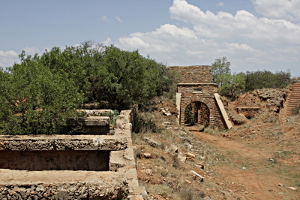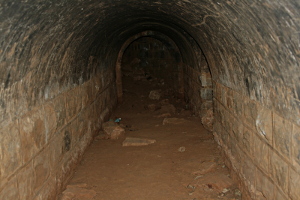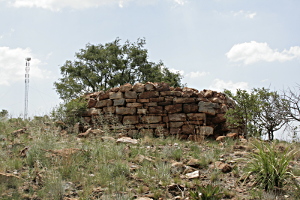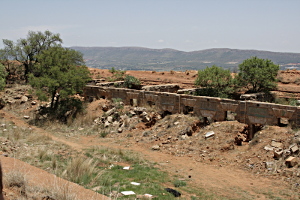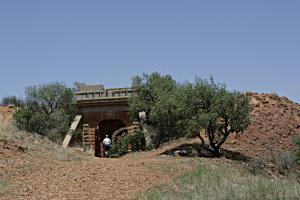Fort Daspoortrand and West Fort Blockhouse
The late 19th century was a tumultuous period for the South African region, with Pretoria as its strategic epicenter. The Jameson Raid of 1895, coupled with a series of significant events, drove the Zuid-Afrikaansche Republiek (ZAR) government to a crucial realization: Pretoria needed protection against potential adversaries.
The defense of Pretoria began with the vision of a former French artillery officer, commissioned to conceive a robust defense mechanism. His proposition entailed the construction of rotating towers equipped with guns, strategically stationed around the town. However, following its approval on 24 March 1896, the plan underwent significant revisions.
Primarily, the government, influenced by two German engineers and backed by the preference of the ZAR commander-general, P.J. Joubert, decided on forts rather than towers. The rationale behind this shift was simple; towers couldn't house a considerable garrison, but forts could.
Yet, budgetary constraints led to another compromise. From the eight planned forts, only half saw the light of day between 1896 and 1898. Remarkably, three out of these four were German architectural masterpieces.
Standing west of Pretoria, atop the Daspoortrand, Fort Daspoortrand or "West Fort" (as termed by the British), commands an impressive panoramic view of the terrain below. Contrasting its German counterparts, the fort was the brainchild of Grunberg, sculpted in an elegant French style.
Equipped with state-of-the-art amenities, the forts of that era were revolutionary. They boasted the most advanced equipment globally, complete with electricity, telegraphic tools, and even telephones. Further reinforcing their might, each was armed with a formidable 155mm Schneider siege gun.
Despite their strategic positioning and advanced arsenal, the impending course of the Anglo-Boer war turned the tide for these forts. The ZAR government opted to deploy the guns in the battlefield against the British, rather than garrisoning them within the forts.
On 5 June 1900, British troops marched into Pretoria unchallenged. The forts stood silent, devoid of their military might. From 7 June 1900 onwards, British soldiers occupied and stationed themselves within these forts, marking a new chapter in their storied history. However, post the war, around 1904, these architectural marvels faced neglect. The British forces eventually left, and the forts, including Fort Daspoortrand, were left to deteriorate and succumb to the passage of time.
Grunberg's creation, Fort Daspoortrand, boasts an almost rectangular silhouette. Its construction relied heavily on concrete and bricks, harmoniously merging with a natural rock outcrop. The fort was fortified externally with sand against its walls and roof, providing added protection.
The entrance is a testament to its grandeur, adorned with dual steel doors, framed by five imposing arches. Delving deeper, one discovers tunnels connecting three ammunition rooms, partially subterranean. Two lifts facilitated the transfer of ammunition to the guns positioned on the fort's bastions. Retaining their historical significance, some rooms still display their original Dutch nomenclature, like "keuken" (kitchen), "telegraaf" (telegraph), and "machinen" (machine).
Constructed with an investment of £46,500, Fort Daspoortrand was completed in November 1898.
Fort Daspoortrand remains an emblematic representation of the rich tapestry of Pretoria's history, intertwining strategic decisions, architectural innovations, and the changing tides of war. Despite the ravages of time and war, it stands as a testament to the resilience and the historical significance of the era it was built in.
